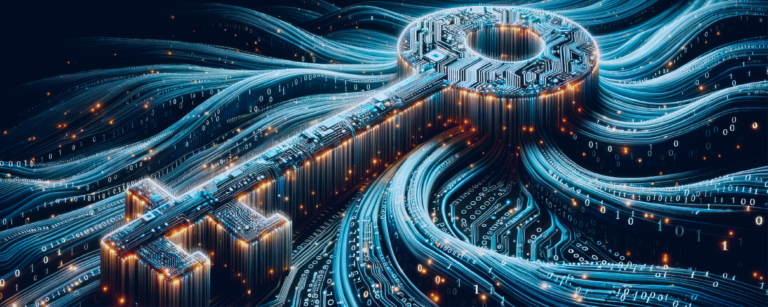The Cybersecurity Risks of Generative Artificial Intelligence (GenAI)
January 19, 2024
The advancements in artificial intelligence (AI) have brought about numerous benefits and opportunities. One such advancement is GenAI, a powerful tool that has revolutionized various industries. However, with every technological breakthrough comes potential risks, and cybersecurity is no exception. While Generative AI (GenAI) offers immense potential for businesses to enhance their operations and improve efficiency, it also poses significant cybersecurity risks. As organizations increasingly rely on GenAI for managing security systems, it becomes crucial to understand and address these risks effectively.
The Risk Potential: Knowing the Landscape
One of the primary concerns with GenAI is its vulnerability to cyber threats. As this technology becomes more sophisticated, so do the tactics employed by malicious actors seeking to exploit its weaknesses. Without proper safeguards in place, GenAI can become an attractive target for cybercriminals looking to gain unauthorized access or manipulate sensitive data. According to Infosecurity Magazine, “Security experts have warned multiple times that GenAI can supercharge social engineering by enabling threat actors to scale highly convincing phishing campaigns.”
Another risk associated with GenAI lies in the management of security protocols. While this technology can automate various security tasks and streamline processes, it also requires careful oversight and monitoring by skilled professionals. Failure to adequately manage and maintain GenAI’s security measures can leave organizations exposed to potential breaches or system failures.
GenAI applications are built on LLM (Large Language Model) databases that pose unique risks of their own. SQL (Structured Query Language) and LLM (Large Language Models) databases represent distinct approaches in the realm of data management. SQL databases have been a longstanding foundation, offering a structured and efficient method for organizing and querying data. In contrast, LLM databases, often associated with NoSQL databases, embrace a more flexible and scalable model suitable for handling large volumes of unstructured or semi-structured data. While the adoption of LLM databases introduces advantages in terms of scalability and adaptability, it also brings forth potential cybersecurity challenges. The flexibility of LLM databases can lead to increased complexity in access control and authorization mechanisms, potentially resulting in misconfigurations and unintended exposure of sensitive data. Additionally, as LLM databases become more prevalent, the industry faces the challenge of ensuring robust encryption methods and secure configurations to protect against data breaches and unauthorized access. As organizations navigate the shift towards LLM databases, a comprehensive cybersecurity strategy is imperative to address these challenges and maintain the integrity and confidentiality of stored data.
Furthermore, as GenAI continues to evolve rapidly, keeping up with the latest updates and patches becomes crucial for maintaining a secure environment. Failure to regularly update managed security systems can leave organizations vulnerable to emerging threats that exploit known vulnerabilities.

How Can Organizations Safeguard Against the Potential Risks of GenAI?
To mitigate these risks effectively, organizations must invest in robust cybersecurity measures specifically tailored for GenAI implementation. This includes implementing multi-layered security protocols that encompass encryption techniques, access controls, intrusion detection systems (IDS), firewalls, and regular vulnerability assessments.
Here are five essential cybersecurity measures that can help protect against potential threats posed by GenAI:
1. Robust Authentication
Implement strong authentication protocols to ensure only authorized individuals have access to sensitive data or systems. This includes multifactor authentication (MFA) and biometric verification methods, such as fingerprints or facial recognition.
2. Regular Software Updates
Keep all software and applications up to date with the latest security patches. Regular updates help address vulnerabilities that cybercriminals could exploit, ensuring your systems are protected against emerging threats.
3. Data Encryption
Encrypting sensitive data helps safeguard it from unauthorized access. Utilize strong encryption algorithms to protect data both at rest and in transit. This way, even if GenAI systems are compromised, the encrypted data remains incomprehensible to unauthorized parties.
4. Monitoring and Intrusion Detection Systems
Implement comprehensive monitoring systems that can detect any unusual activities or potential breaches within your network. Intrusion detection systems (IDS) can identify suspicious behavior and trigger immediate responses to prevent or minimize any potential damage.
5. Employee Training
Employee Training and Awareness: Educate your employees about the potential risks associated with GenAI and the importance of cybersecurity best practices. Promote a culture of cybersecurity awareness, emphasizing the significance of strong passwords, secure browsing habits, and caution with email attachments or links.
Remember, implementing these measures is just the first step. Regularly reassess your security protocols, adapt to evolving threats, and stay informed about the latest trends in GenAI cybersecurity to ensure your organization remains protected. Better yet, work with an experienced cybersecurity services provider, like BCS365, to take the guesswork out of protecting your company and its data.
In conclusion, while the benefits of using GenAI are undeniable when it comes to managed security, organizations must also be aware of the associated cybersecurity risks. By implementing comprehensive security measures and staying vigilant against emerging threats, businesses can harness the power of GenAI while safeguarding their sensitive data and systems from potential breaches.




